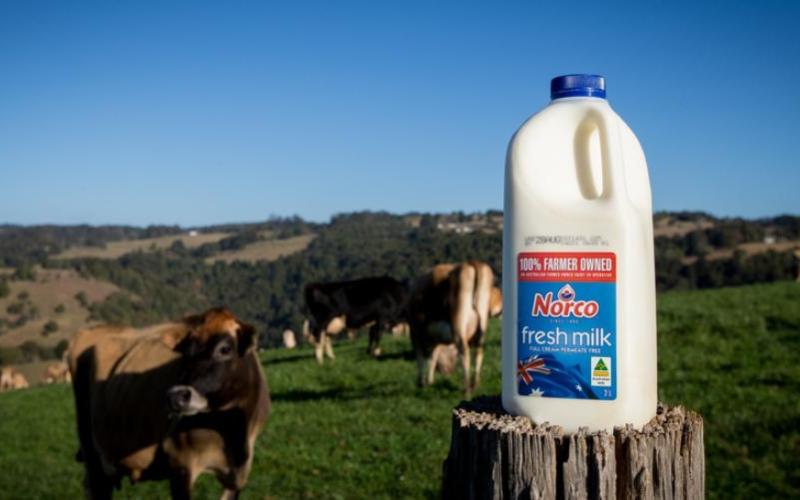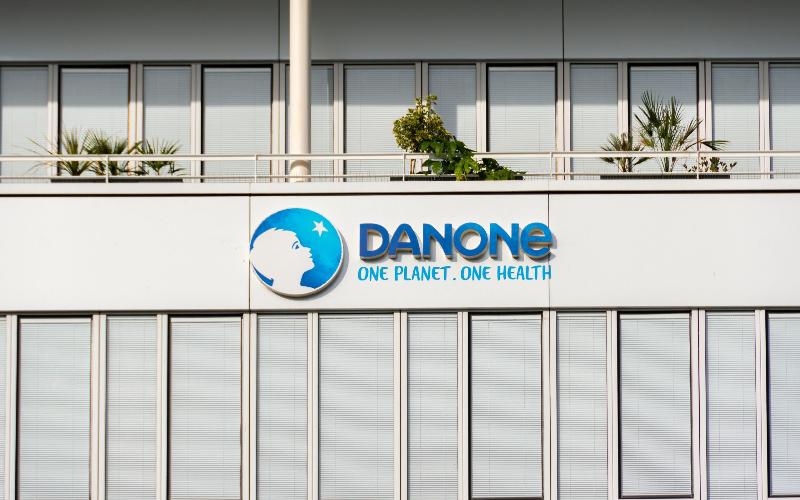Prices Like in Europe: Reflections on the 2023 Year for Milk Producers and Processors in Ukraine
Sourse: The DairyNews
The development of the dairy industry in Ukraine faces a challenge—raw material shortages. The cattle population is decreasing, while the share of milk exports to EU countries has been increasing over the last two years. Vadim Chagarovsky, the head of the Board of Directors of the "Association of Dairy Enterprises of Ukraine," highlighted these issues during the All-Ukrainian Conference "Dairy Business – 2023." Despite this challenge, milk processing in 2023 saw a 5% growth.

Chagarovsky discussed milk prices, processing capacities in Ukraine, the growth of domestic consumption and exports, and shared his vision for the dairy industry in 2030 during the conference.
Losses in the Dairy Sector:
The ongoing war has led to the loss of 39 enterprises in various regions, including Kharkiv, Luhansk, Donetsk, Kherson, Mykolaiv, Sumy, and Zaporizhia. Two major facilities, "Bashtansky Cheese Plant" in Mykolaiv Oblast and "Kupyansk MKK" in Kharkiv Oblast, were destroyed. Some enterprises had to cease operations due to war-related issues.
A continuous decline in the number of cattle in the population is observed, unrelated to the war but mainly due to insufficient state support for dairy farming.
Rise in Dairy Market Challenges:
Over the past two years, the dairy market has seen an increase in the quantity of counterfeit products. Unfortunately, Ukraine lacks a program to address this issue effectively.
The shadow market for dairy raw materials has grown by 20%. Approximately 1 million tons of milk are diverted to the shadow market annually. Chagarovsky emphasized the need for effective programs encouraging the population to deliver raw materials for official processing.
Logistics Complications:
The logistics sector has faced complications and increased costs due to the war. Ports facilitating deliveries are closed, and old logistics chains are disrupted. Current issues are observed at western borders, particularly in Poland and Slovakia. However, despite these challenges, the dairy industry showed export results in 2023 not significantly worse than the previous year.
Concerns fr om the EU:
The EU is wary of threats from Ukrainian exports, demonstrating a critical stance toward the Ukrainian dairy industry. Chagarovsky stressed the importance of discussing joint actions with the government now to avoid signing unfavorable agreements post-Victory.
Current Milk Production Overview:
In terms of milk production volumes, Ukraine ranks 32nd globally. According to official statistics, the country produces 7.36 million tons of milk. However, expert assessments suggest a slight reduction to approximately 6 million tons due to a shortage of milk raw materials, hampering the development of the dairy industry. The current population of milking cows stands at 1.28 million, with 890,000 in the general population and 390,000 on farms. Unfortunately, the identification of the total dairy cow population by the State Consumer Protection Service is still incomplete.
Approximately 400,000 tons of milk, when converted to raw materials, are exported, with 40% directed for processing. A notable market trend is the alignment of milk prices from agricultural enterprises with those in EU countries, erasing the advantages Ukraine had in the previous year.
Positive Trends and Challenges:
On a positive note, annual milk processing has increased by 5%, but the share of milk from the general population in processing has reduced to only 12%, while 94.5% comes from agricultural enterprises.
Dairy Livestock Scenario:
The trend of increasing milk processing is expected to continue into the next year. Recently, at a milk congress in Uman, 50% of milk producers confirmed their interest in developing and increasing production capacity. The projection for 2025 anticipates enterprises maintaining 441,000 dairy cows and producing 3.45 million tons of milk.
Domestic Market Consumption:
The domestic market has grown by 7% in 2023, attributed to relative price stability, the return of migrants (approximately 1 million), a thriving shadow market, increased demand from military families due to improved family budgets, and rising demand from the HoReCa sector.
Import and Export of Dairy Products:
In 2022, the import of dairy products to Ukraine decreased due to reasons such as emigration and currency exchange rates. However, this year's indicators are expected to be better, posing a challenge for Ukrainian producers, particularly in the cheese segment, as the specific weight of imported cheese in imports is 70%.
Regarding exports, there's a slight decline compared to the previous year, particularly in butter. However, there is a growing trend in the export of dairy raw materials, with a daily export of 70 tons of milk to Moldova. The overall trade balance for dairy products is expected to be negative this year, with over $153 million exported in 10 months, compared to $251 million in 2022.
Future Vision for the Dairy Industry in 2030:
Envisioning the Ukrainian dairy industry in 2030 draws inspiration from the Netherlands, wh ere 57 enterprises produced 14 million tons of milk as of 2022. The forecast suggests an annual milk production of up to 8 million tons, with 70% of this directed for processing. Although the number of processing enterprises is expected to decrease, this is a global trend.
The hope is for an increase in the number of plants processing more than 500,000 tons of milk annually. Currently, there are 12 such plants in Ukraine, meeting all European requirements. Additionally, by 2030, a Research Center under the "Association of Dairy Entrepreneurs" is expected to be operational, focusing on the development of new dairy products and addressing related challenges.
To support the development of the dairy livestock sector and processing industry, legislative changes are crucial, including amendments to the Tax and Criminal Codes, reduced VAT on all dairy products, abolishment of VAT on imported innovative equipment, the enactment of a Trade Law, and a proposed Packaging and Waste Law. Support for the industry will also benefit from a review of terms of trade with the EU, including either mirror quotas or mirror free trade, as well as the repeal of the "Law on Milk and Dairy Products."
Source
Losses in the Dairy Sector:
The ongoing war has led to the loss of 39 enterprises in various regions, including Kharkiv, Luhansk, Donetsk, Kherson, Mykolaiv, Sumy, and Zaporizhia. Two major facilities, "Bashtansky Cheese Plant" in Mykolaiv Oblast and "Kupyansk MKK" in Kharkiv Oblast, were destroyed. Some enterprises had to cease operations due to war-related issues.
A continuous decline in the number of cattle in the population is observed, unrelated to the war but mainly due to insufficient state support for dairy farming.
Rise in Dairy Market Challenges:
Over the past two years, the dairy market has seen an increase in the quantity of counterfeit products. Unfortunately, Ukraine lacks a program to address this issue effectively.
The shadow market for dairy raw materials has grown by 20%. Approximately 1 million tons of milk are diverted to the shadow market annually. Chagarovsky emphasized the need for effective programs encouraging the population to deliver raw materials for official processing.
Logistics Complications:
The logistics sector has faced complications and increased costs due to the war. Ports facilitating deliveries are closed, and old logistics chains are disrupted. Current issues are observed at western borders, particularly in Poland and Slovakia. However, despite these challenges, the dairy industry showed export results in 2023 not significantly worse than the previous year.
Concerns fr om the EU:
The EU is wary of threats from Ukrainian exports, demonstrating a critical stance toward the Ukrainian dairy industry. Chagarovsky stressed the importance of discussing joint actions with the government now to avoid signing unfavorable agreements post-Victory.
Current Milk Production Overview:
In terms of milk production volumes, Ukraine ranks 32nd globally. According to official statistics, the country produces 7.36 million tons of milk. However, expert assessments suggest a slight reduction to approximately 6 million tons due to a shortage of milk raw materials, hampering the development of the dairy industry. The current population of milking cows stands at 1.28 million, with 890,000 in the general population and 390,000 on farms. Unfortunately, the identification of the total dairy cow population by the State Consumer Protection Service is still incomplete.
Approximately 400,000 tons of milk, when converted to raw materials, are exported, with 40% directed for processing. A notable market trend is the alignment of milk prices from agricultural enterprises with those in EU countries, erasing the advantages Ukraine had in the previous year.
Positive Trends and Challenges:
On a positive note, annual milk processing has increased by 5%, but the share of milk from the general population in processing has reduced to only 12%, while 94.5% comes from agricultural enterprises.
Dairy Livestock Scenario:
The trend of increasing milk processing is expected to continue into the next year. Recently, at a milk congress in Uman, 50% of milk producers confirmed their interest in developing and increasing production capacity. The projection for 2025 anticipates enterprises maintaining 441,000 dairy cows and producing 3.45 million tons of milk.
Domestic Market Consumption:
The domestic market has grown by 7% in 2023, attributed to relative price stability, the return of migrants (approximately 1 million), a thriving shadow market, increased demand from military families due to improved family budgets, and rising demand from the HoReCa sector.
Import and Export of Dairy Products:
In 2022, the import of dairy products to Ukraine decreased due to reasons such as emigration and currency exchange rates. However, this year's indicators are expected to be better, posing a challenge for Ukrainian producers, particularly in the cheese segment, as the specific weight of imported cheese in imports is 70%.
Regarding exports, there's a slight decline compared to the previous year, particularly in butter. However, there is a growing trend in the export of dairy raw materials, with a daily export of 70 tons of milk to Moldova. The overall trade balance for dairy products is expected to be negative this year, with over $153 million exported in 10 months, compared to $251 million in 2022.
Future Vision for the Dairy Industry in 2030:
Envisioning the Ukrainian dairy industry in 2030 draws inspiration from the Netherlands, wh ere 57 enterprises produced 14 million tons of milk as of 2022. The forecast suggests an annual milk production of up to 8 million tons, with 70% of this directed for processing. Although the number of processing enterprises is expected to decrease, this is a global trend.
The hope is for an increase in the number of plants processing more than 500,000 tons of milk annually. Currently, there are 12 such plants in Ukraine, meeting all European requirements. Additionally, by 2030, a Research Center under the "Association of Dairy Entrepreneurs" is expected to be operational, focusing on the development of new dairy products and addressing related challenges.
To support the development of the dairy livestock sector and processing industry, legislative changes are crucial, including amendments to the Tax and Criminal Codes, reduced VAT on all dairy products, abolishment of VAT on imported innovative equipment, the enactment of a Trade Law, and a proposed Packaging and Waste Law. Support for the industry will also benefit from a review of terms of trade with the EU, including either mirror quotas or mirror free trade, as well as the repeal of the "Law on Milk and Dairy Products."
Source
Key News of the Week















